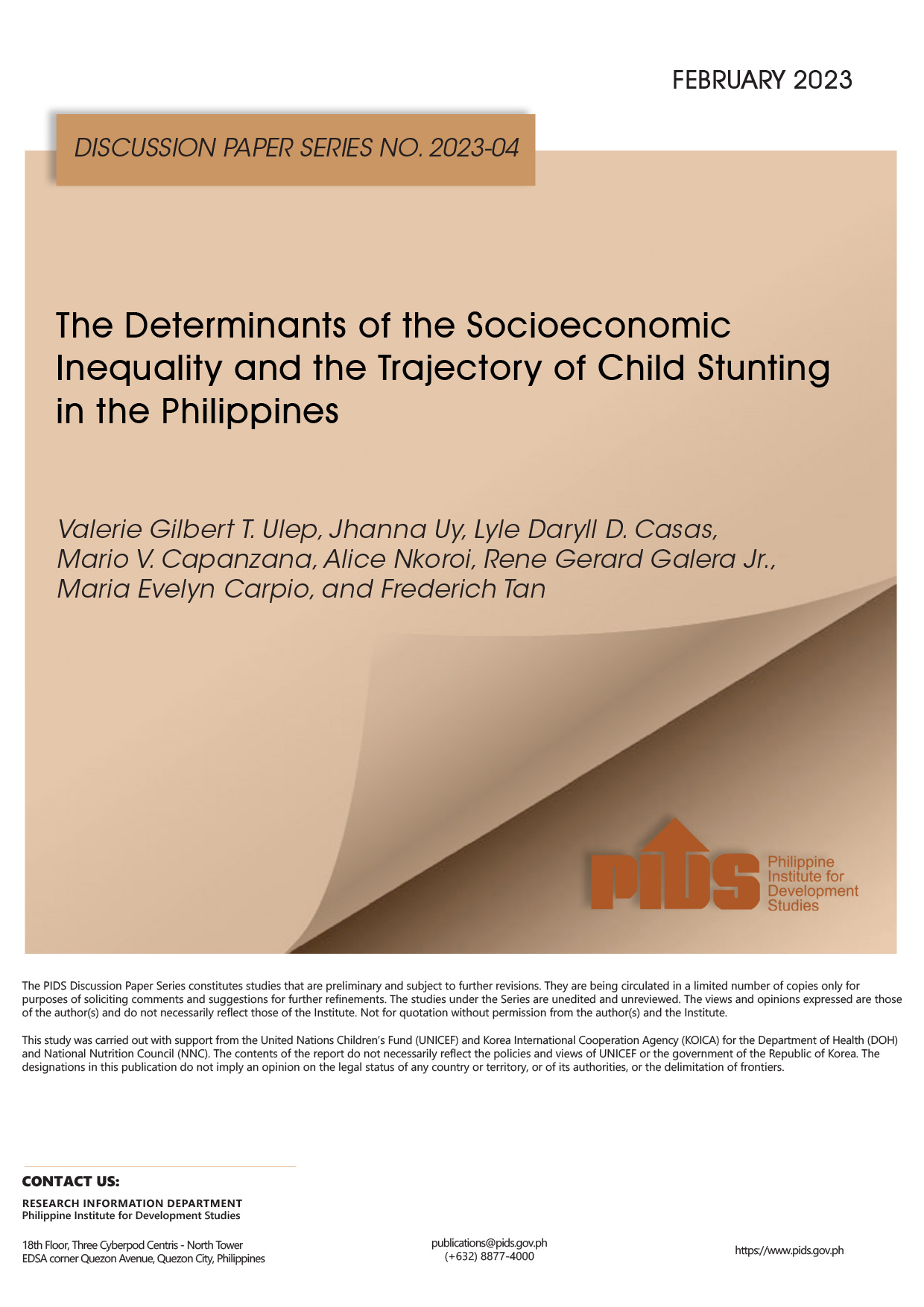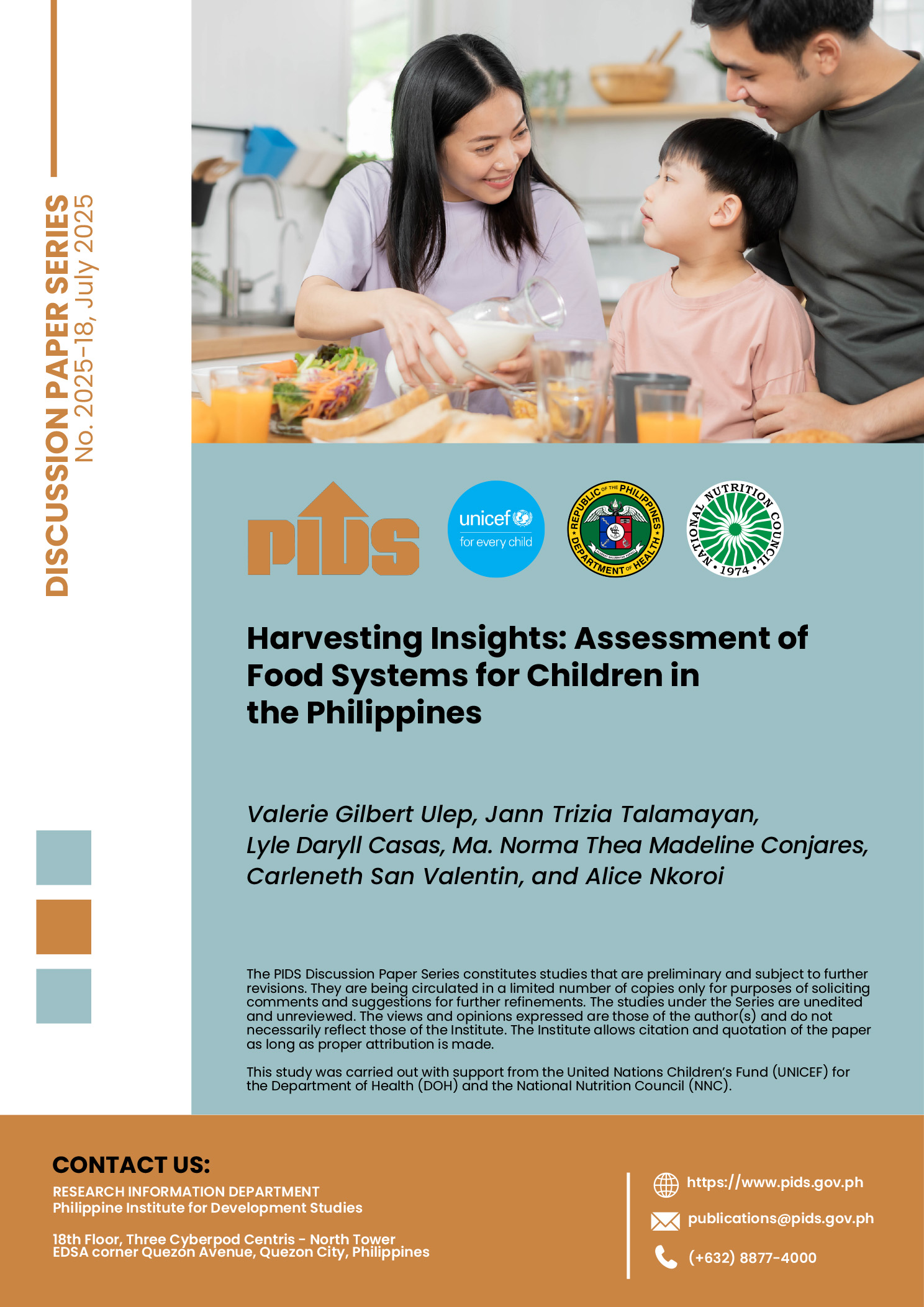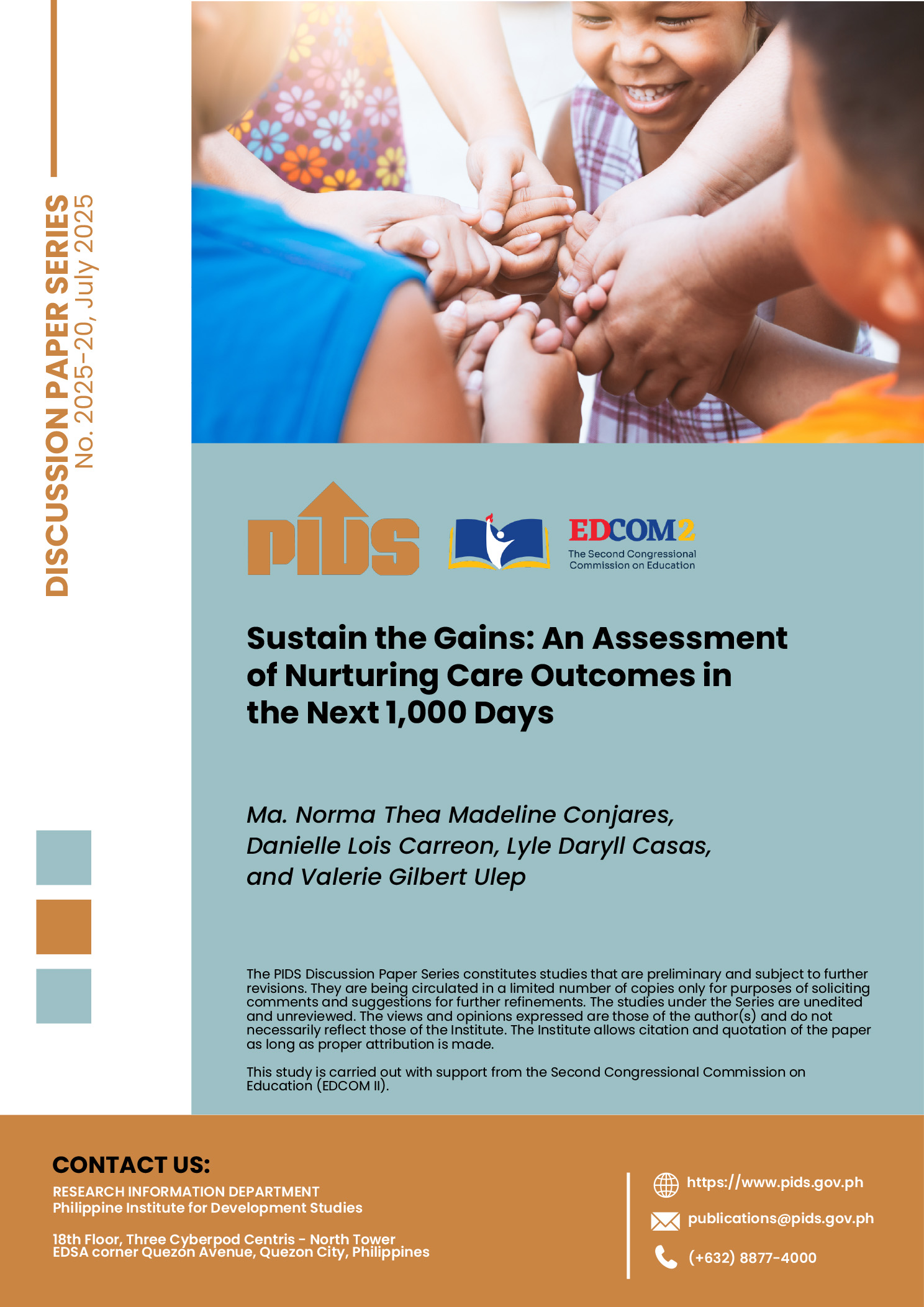About a third of Filipino children are stunted or chronically malnourished. However, there is a paucity of evidence on the socioeconomic inequalities of stunting in the Philippines. This study has two objectives. First, it discusses various determinants of the large socioeconomic disparity in stunting. Second, it models the trajectory of stunting until 2030 should the country expand the coverage of key nutrition and health interventions. Based on the authors’ previous decomposition analysis, maternal nutritional status and education factors, quality of prenatal care, and child diet are significant drivers of the disparity. Furthermore, using a compartment-based model, it finds a 10-percentage point reduction in the prevalence of stunting, with the expansive promotion of infant and young child feeding (IYCF) practices and complementary food interventions. Lastly, the authors note that addressing the socioeconomic disparity in child stunting and universal provision of nutrition and health interventions puts the country on track to its 2030 Sustainable Development Goal (SDG) target.
Comments to this paper are welcome within 60 days from the date of posting. Email publications@pids.gov.ph.
Citations
This publication has been cited 5 times
- Cruz, Moises. 2023. House panel schedules malnutrition summit. Manila Times.
- Gatchalian, Sherwin. 2024. Improving early childhood education. Sunstar.
- Jocson, Luisa Maria Jacinta. 2023. 6-23 months identified as critical age for averting childhood malnutrition. BusinessWorld.
- Jocson, Luisa Maria Jacinta. 2023. 6-23 months identified as critical age for averting childhood malnutrition. BusinessWorld.
- Senate of the Philippines. 2023. Gatchalian: Addressing hunger, malnutrition among learners needed to address PH education crisis. Senate of the Philippines.













